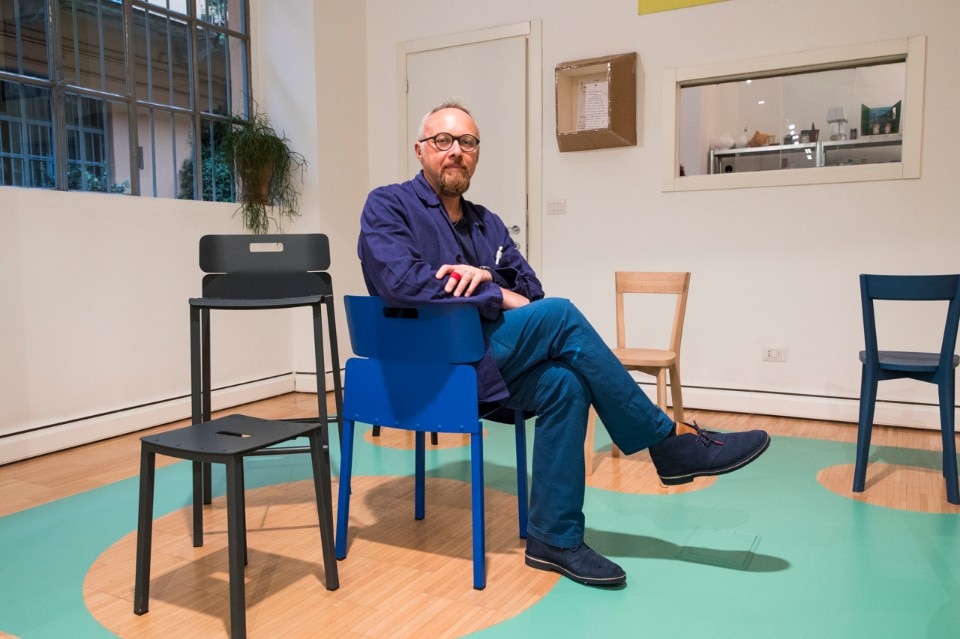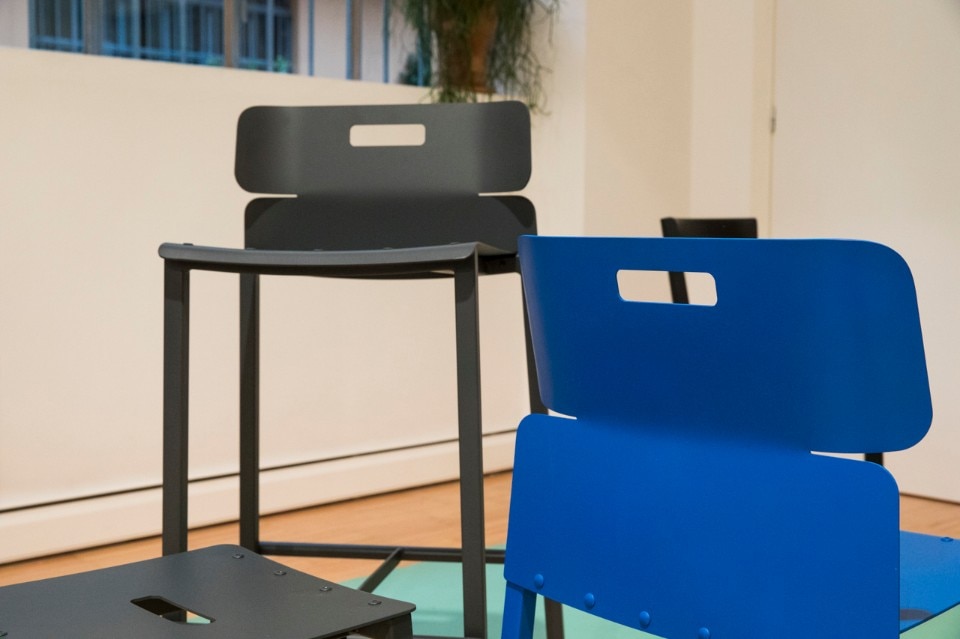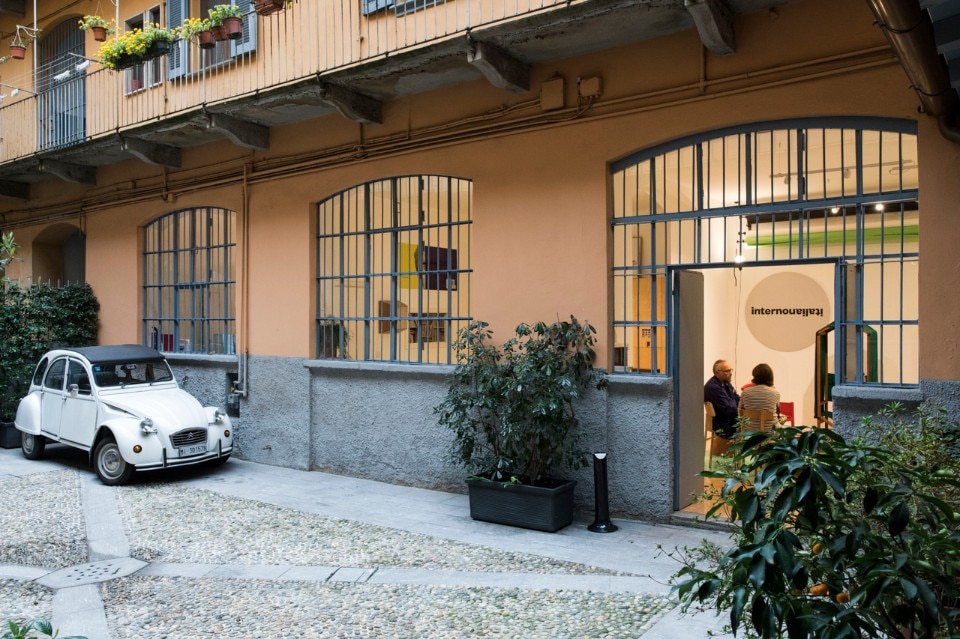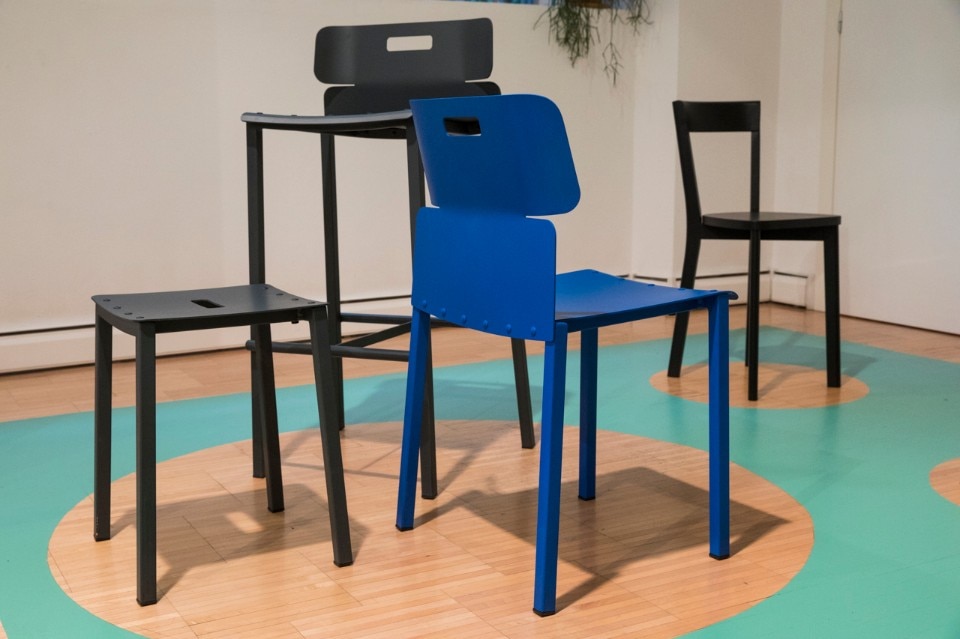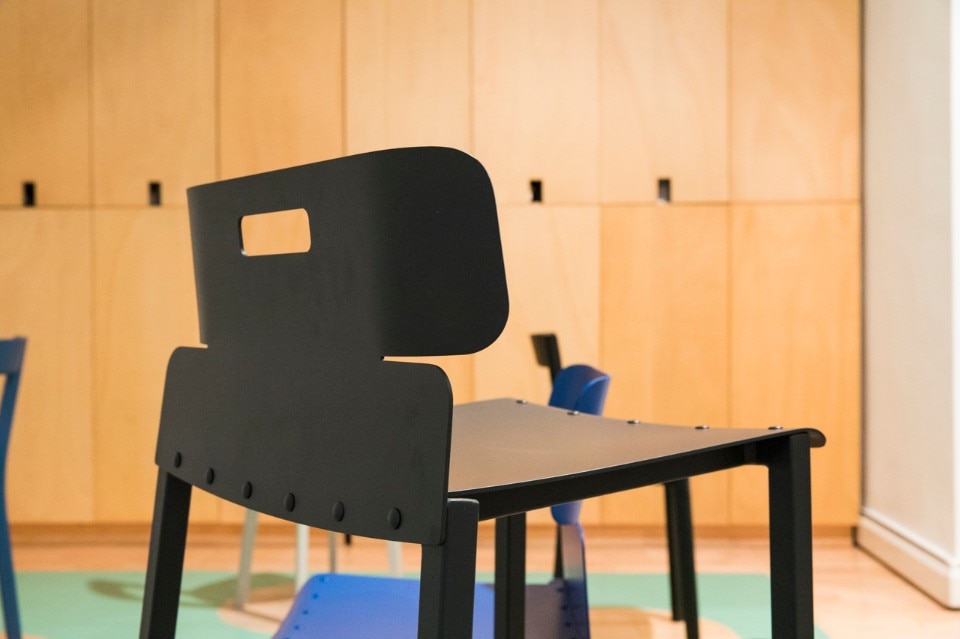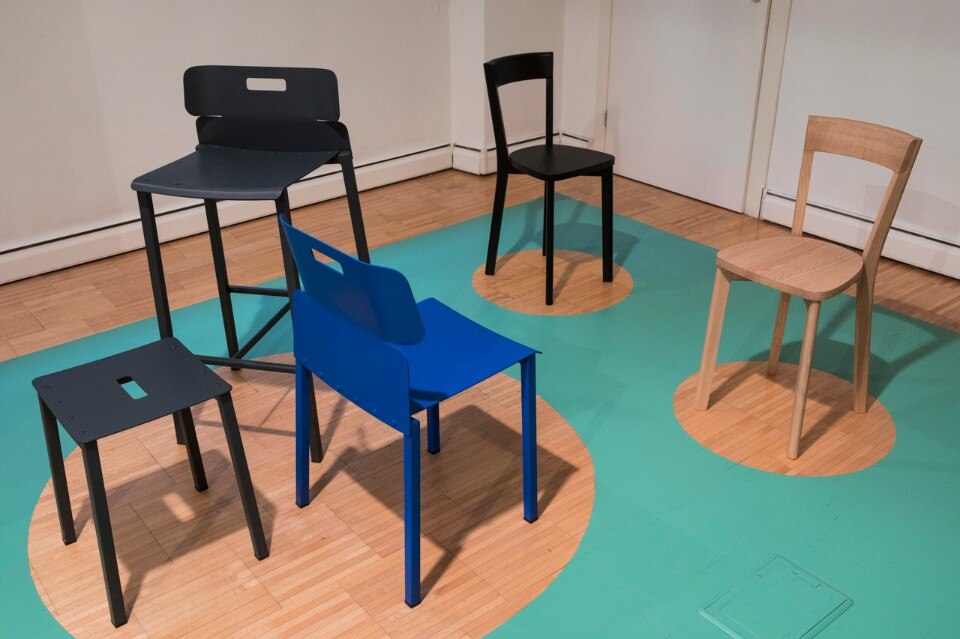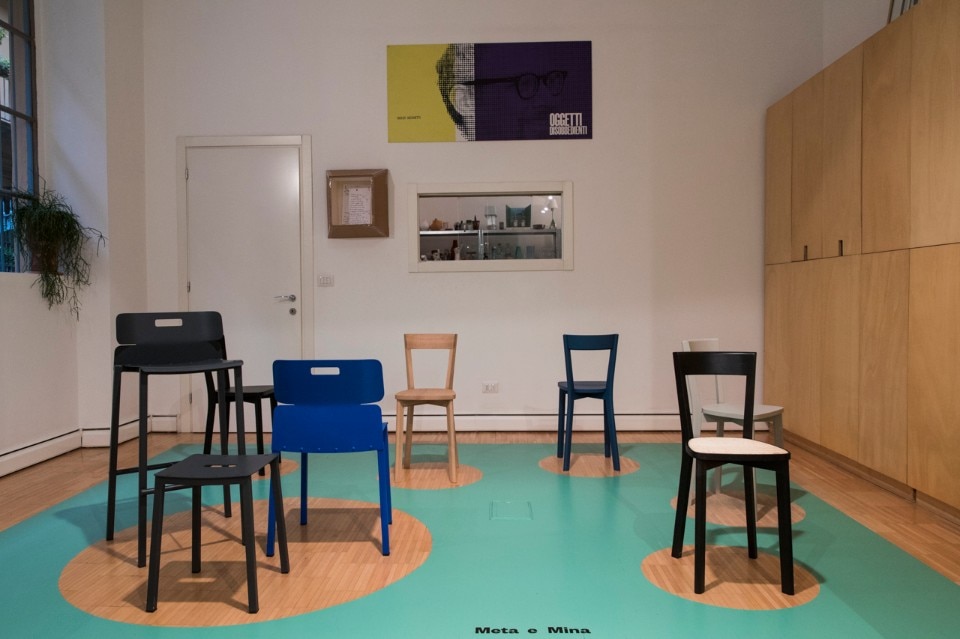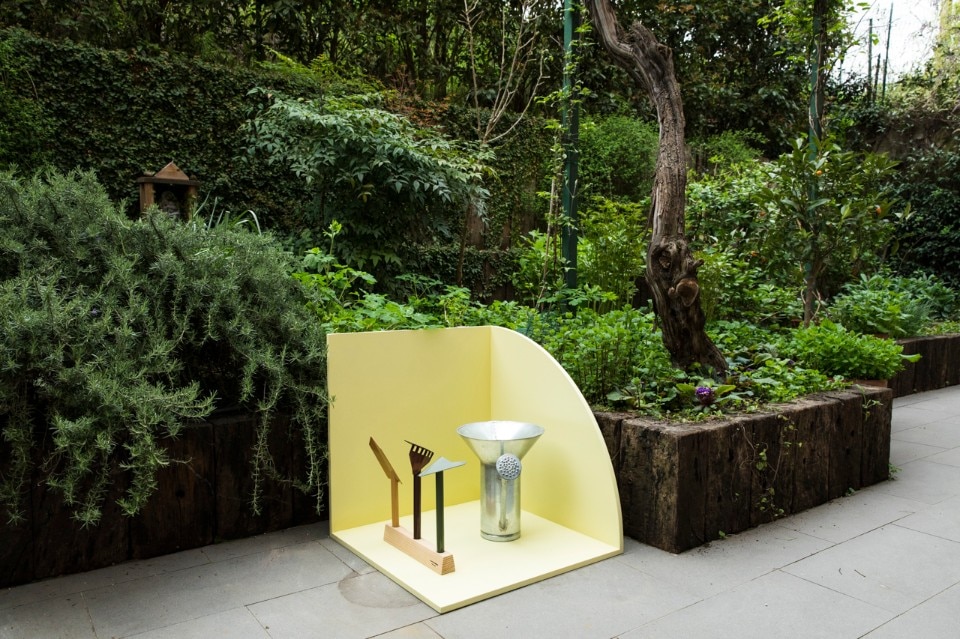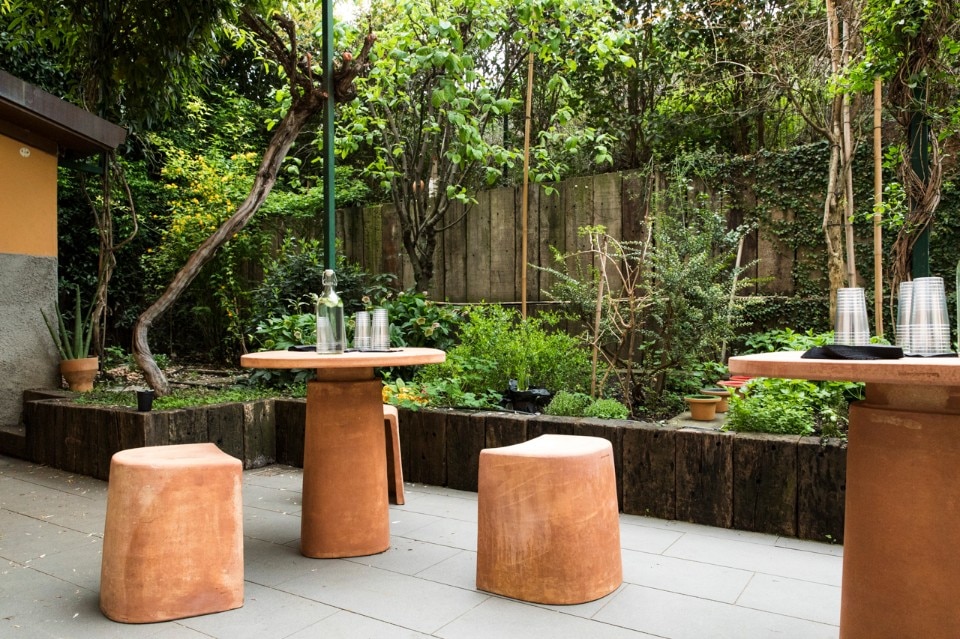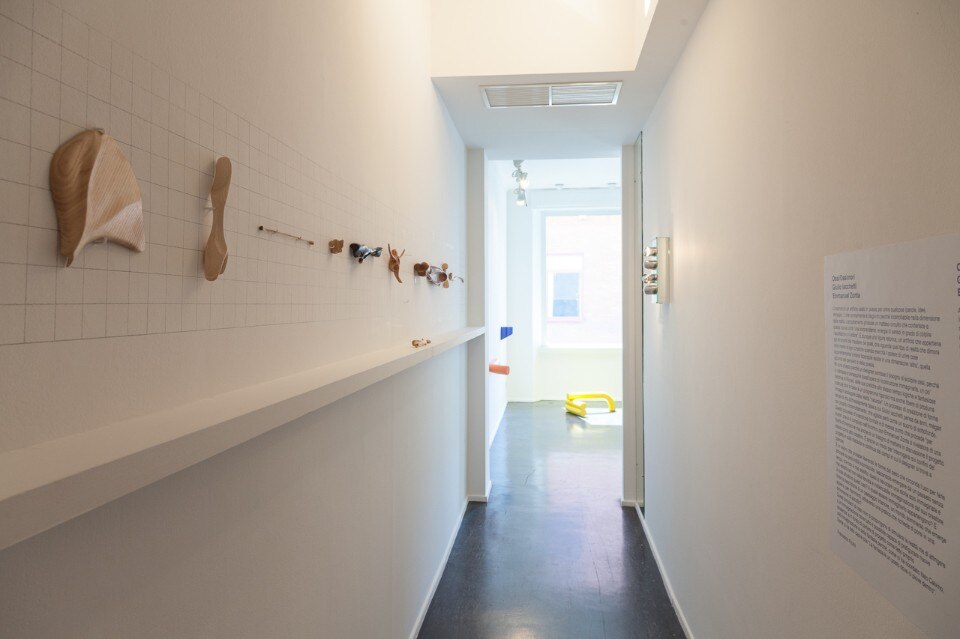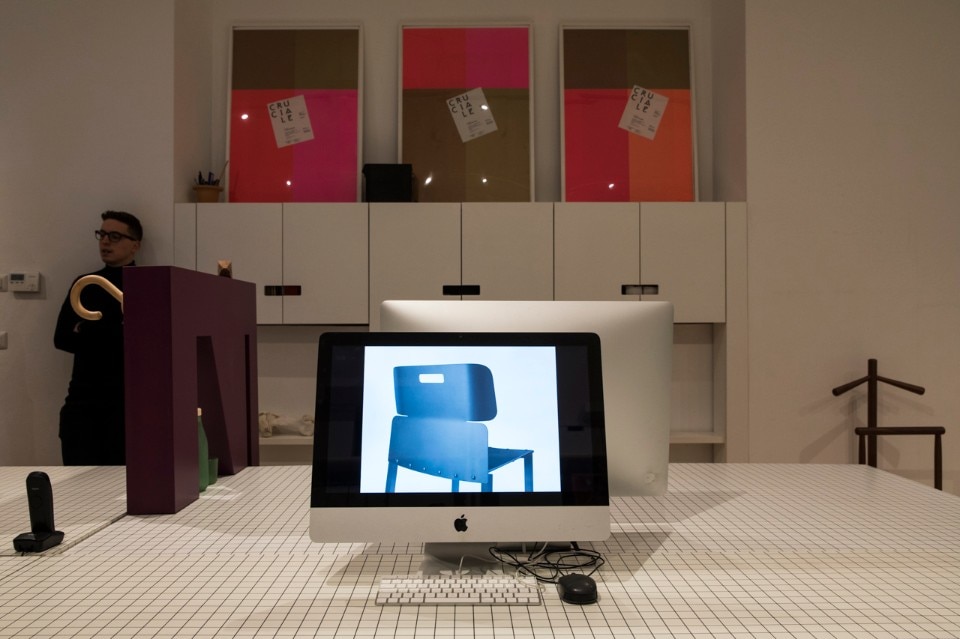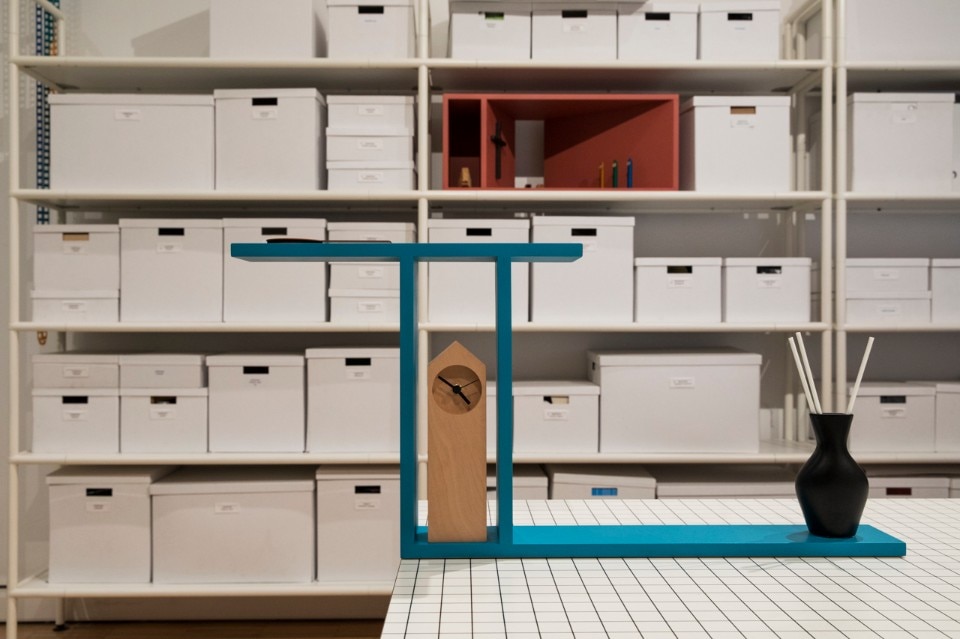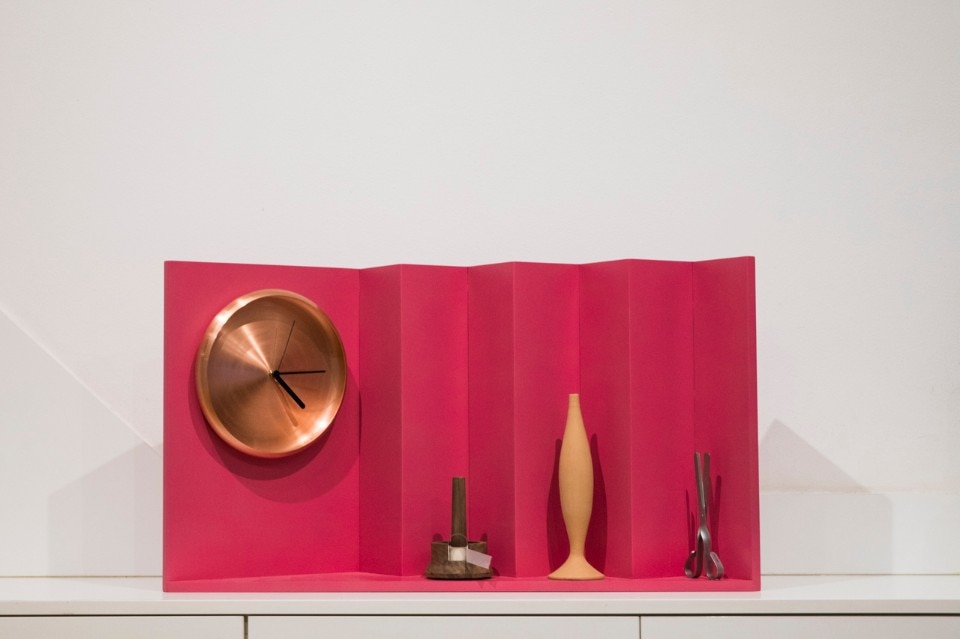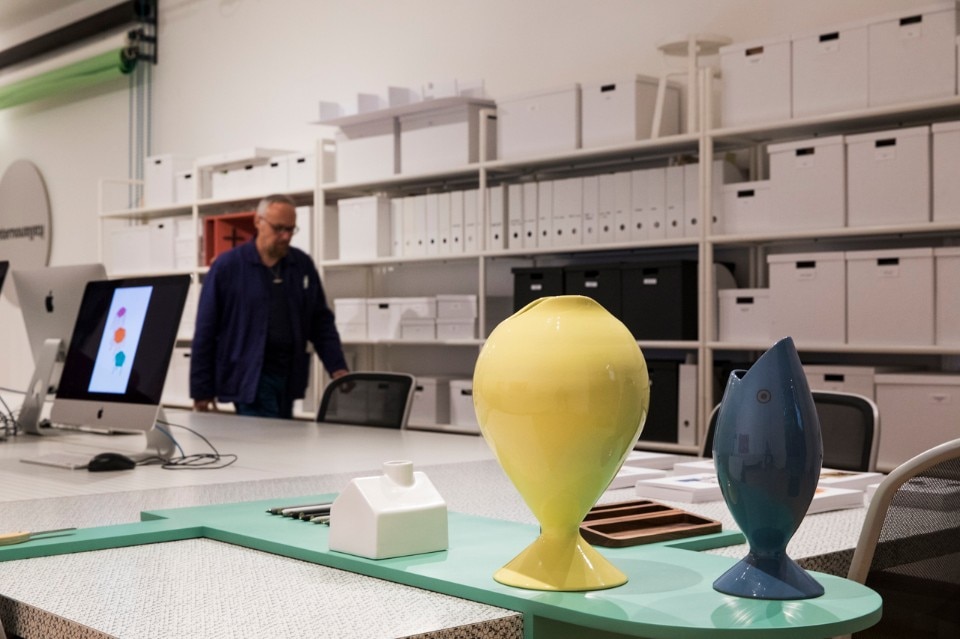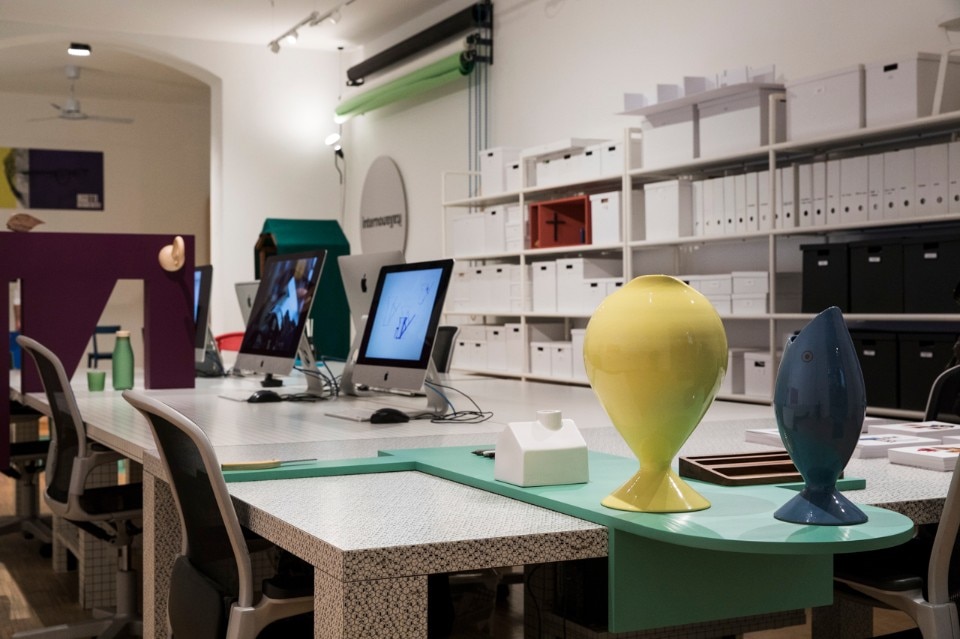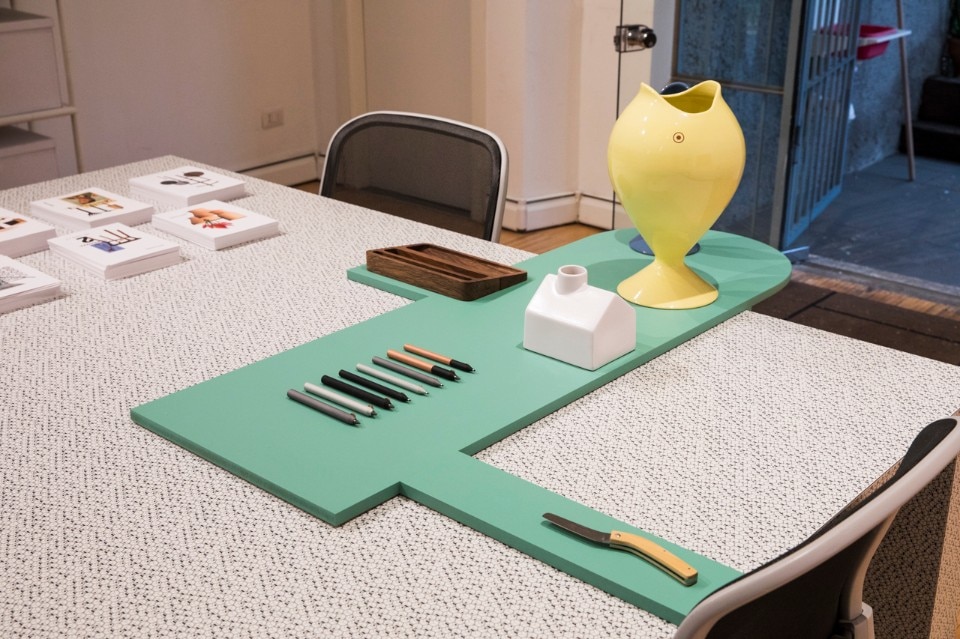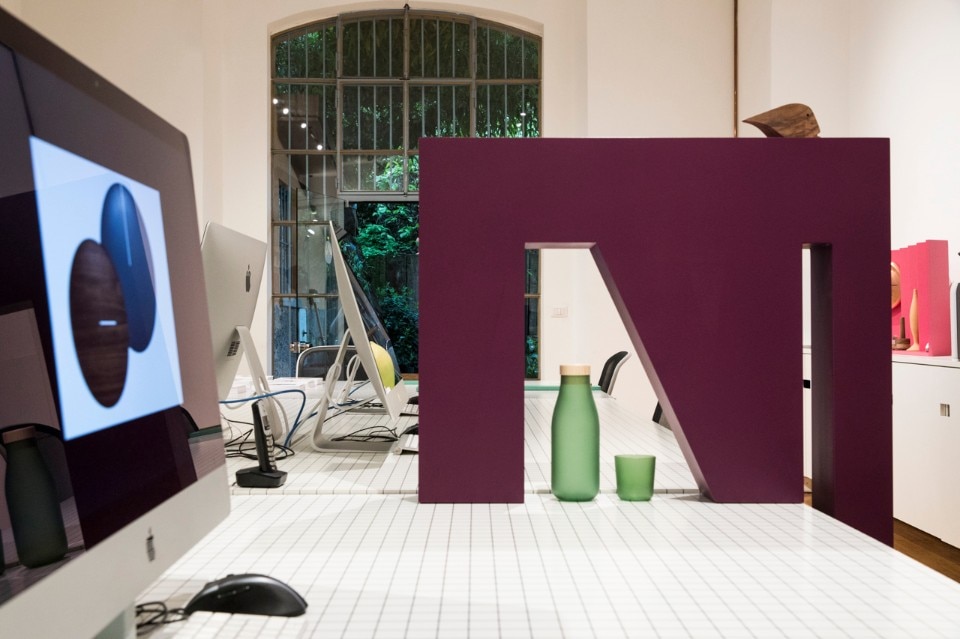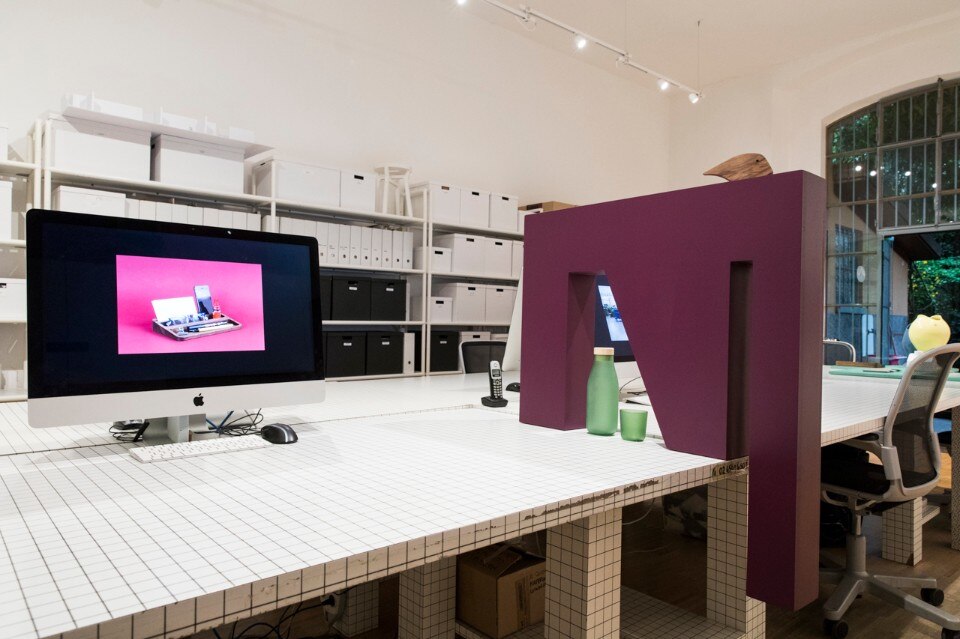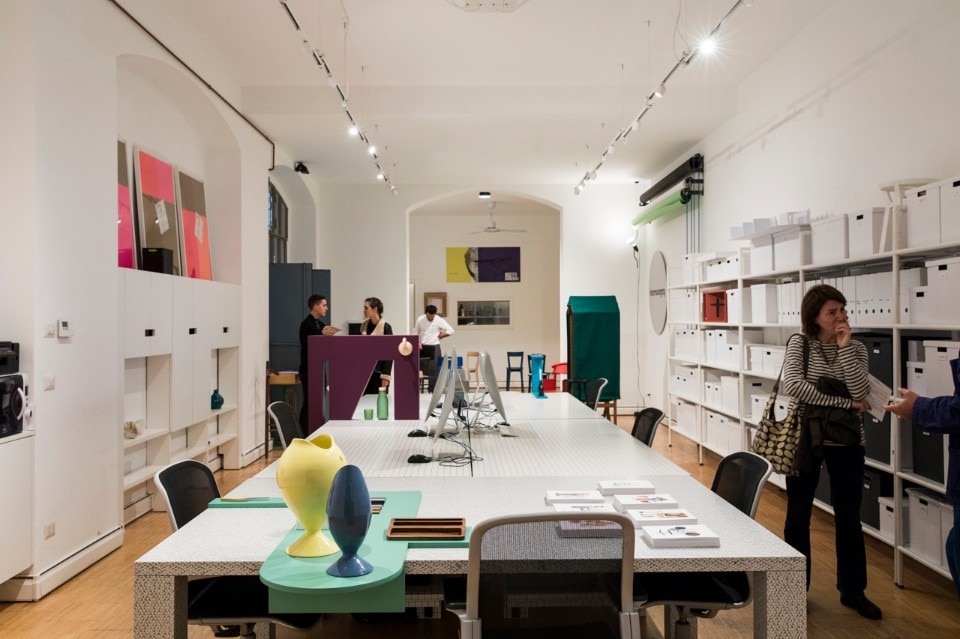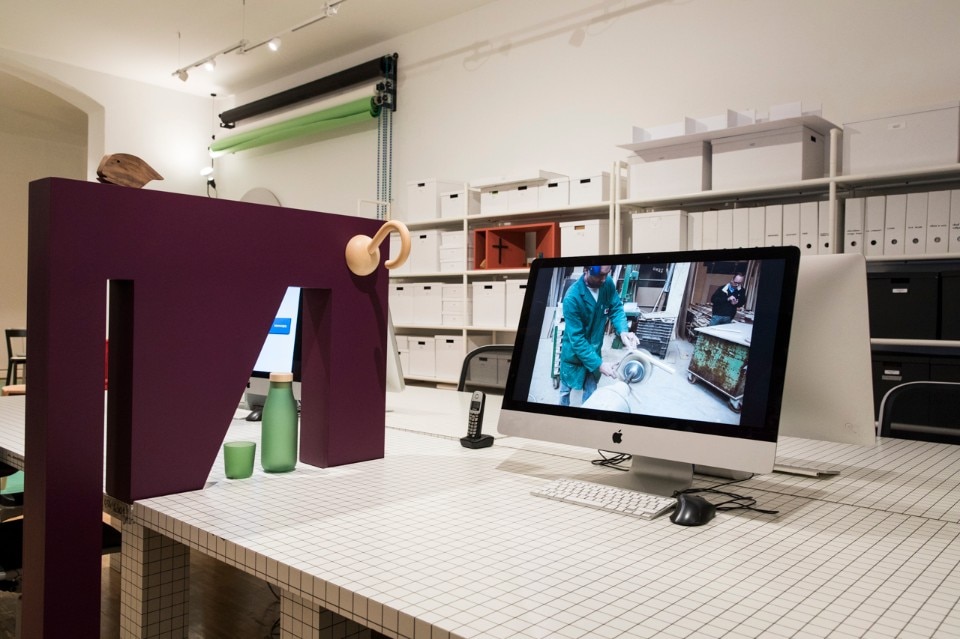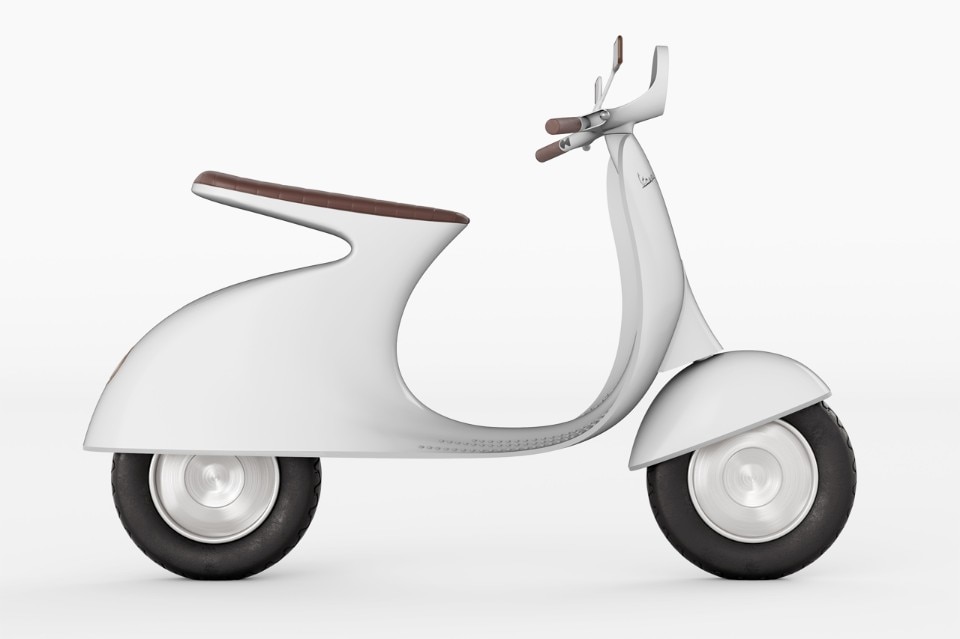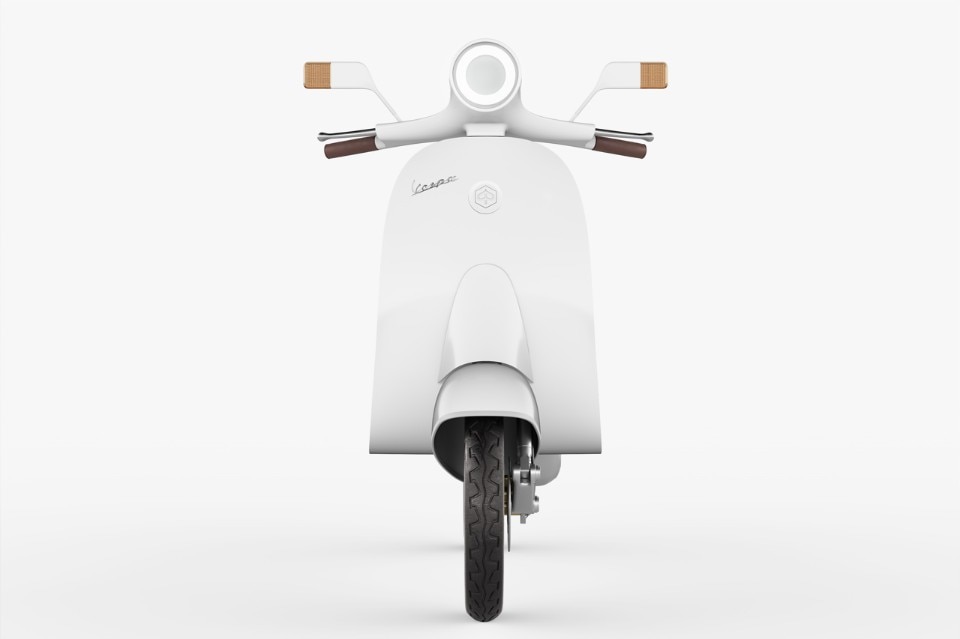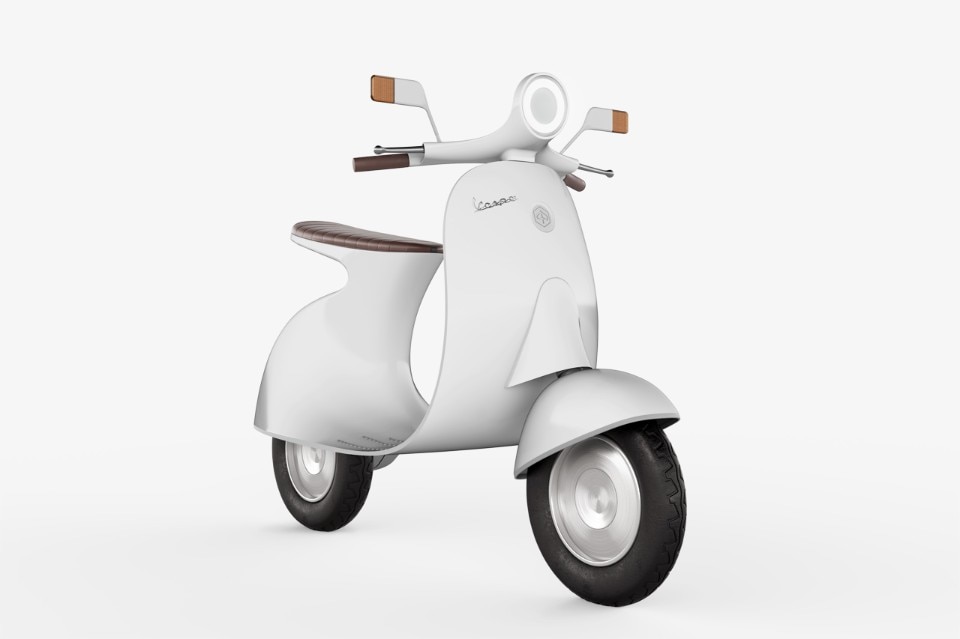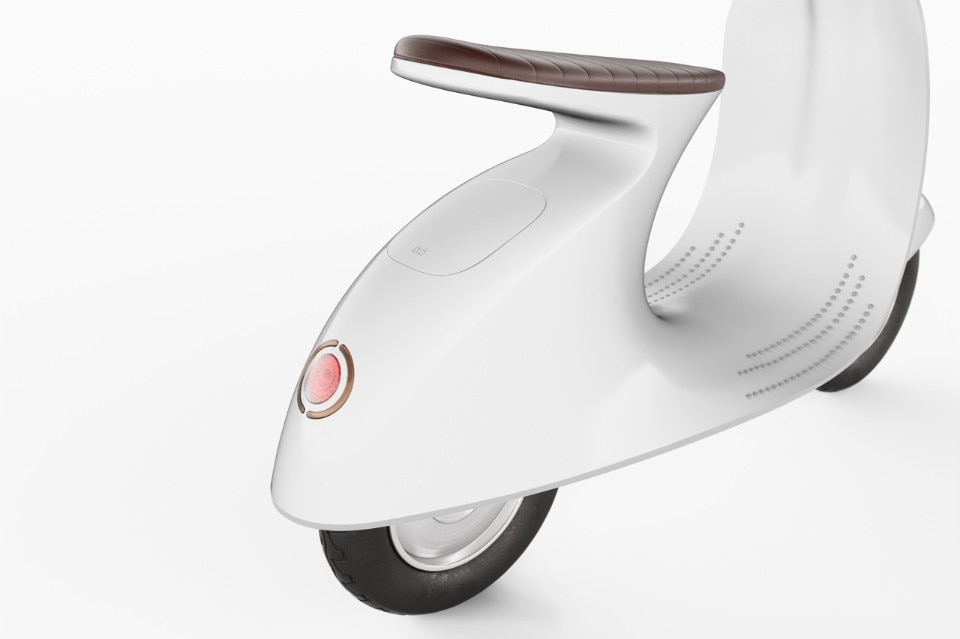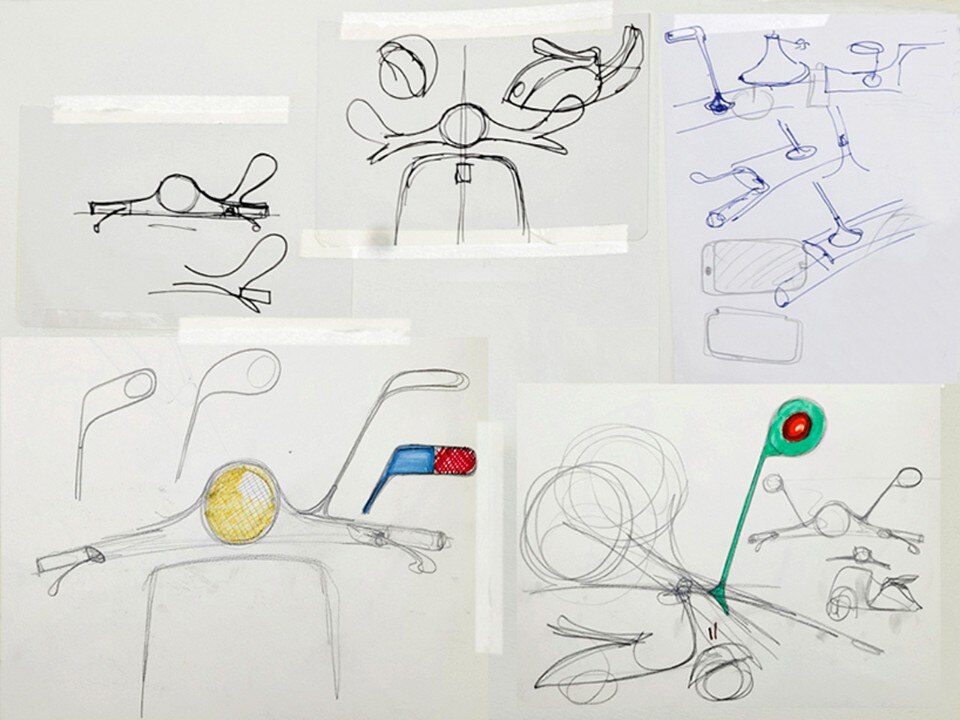The studio, on Viale Tibaldi 10, right near Naviglio Pavese, was installed with the novelties (and history) of the “factory network” of internoitaliano. In the background, a soundtrack that’s all our own: Rino Gateano sings Gianna, and Mina, Se telefonando… It starts from “home”, and with a touch of Italian pride: the Salone of Giulio Iacchetti, who states he is moved, as if it were the first, 18 years ago. There are many, different novelties, diverse companies and types of products: besides internoitaliano, there’s the art direction for the door handle company dnd, the “ossi/ossimori” design with Emmanuel Zonta (at the Galleria Luisa Delle Piane). Plus, a table for the Triennale di Milano (which he calls “an act of love”), a range hood for Folmec (at Eurocucina), a magnetic pen (for Nava), a salad set (Hands on Design) and an installation for Coccio design edition (at the Piccolo Teatro bookshop).
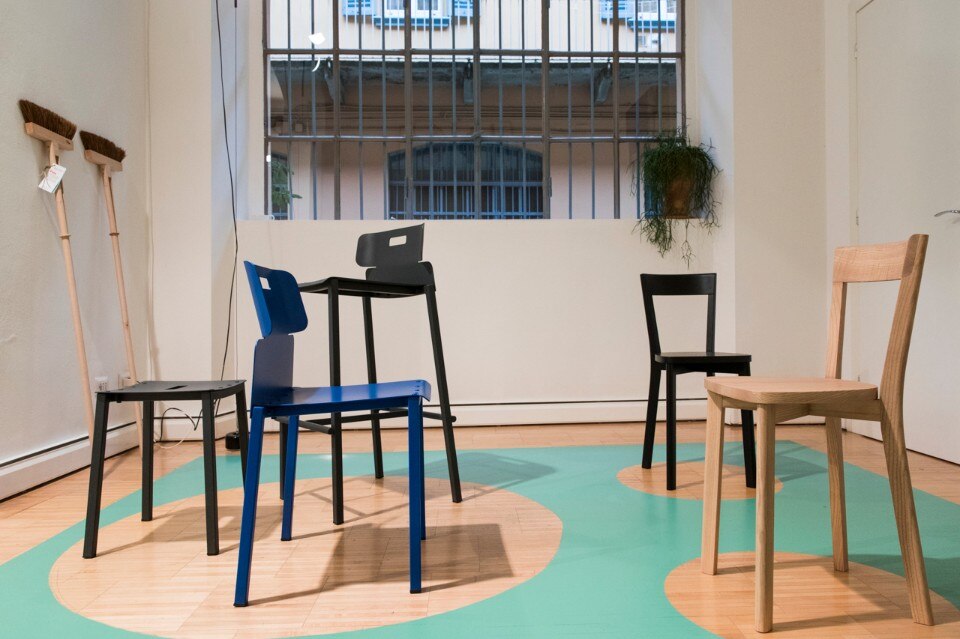
 View gallery
View gallery
You described the days leading up to the Salone as “the eve of eves”. So, is it always worth it? Or, as some say, once a year is even too much?
The Salone is a vast opening onto the world, but it’s also a vast opening inwards for each designer: there’s an outer and an inner projection. Comparing yourself to others, having an exchange, a feeling of challenge, of adopting a critical and self-critical attitude, precisely because everyone is trying to express their best. I believe, for all these reasons, that it’s important and must keep on existing.
As always, there are lots of new things. Let’s start with your studio, where there’s internoitaliano and a lovely installation by Davide Fabio Colaci. How has the brand grown these past years?
For me, internoitaliano is like a really absorbent, permeable sponge for the ideas of others, for the projects of other designers. It’s a small project that grows slowly, but in an organic way. We have no investors to push us along. The important thing is not to let it die off, as unfortunately what happened to other similar projects. This year, we present a wooden chair by Tommaso Caldera, a quite small object that nonetheless offers a good level of comfort. Plus a new chair in aluminium, which I designed.
Does selling online help?
Especially for small objects, but I think the contract sector is strategic. We want to approach it with the Caldera chair: I’m thinking of bars, restaurants, small spaces, where there’s a need for comfort, though.
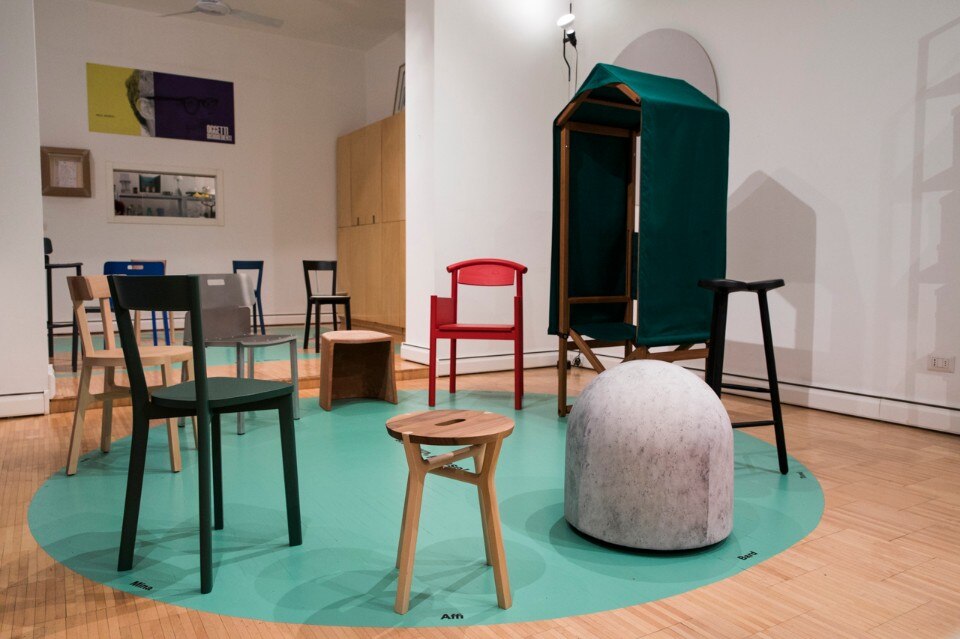
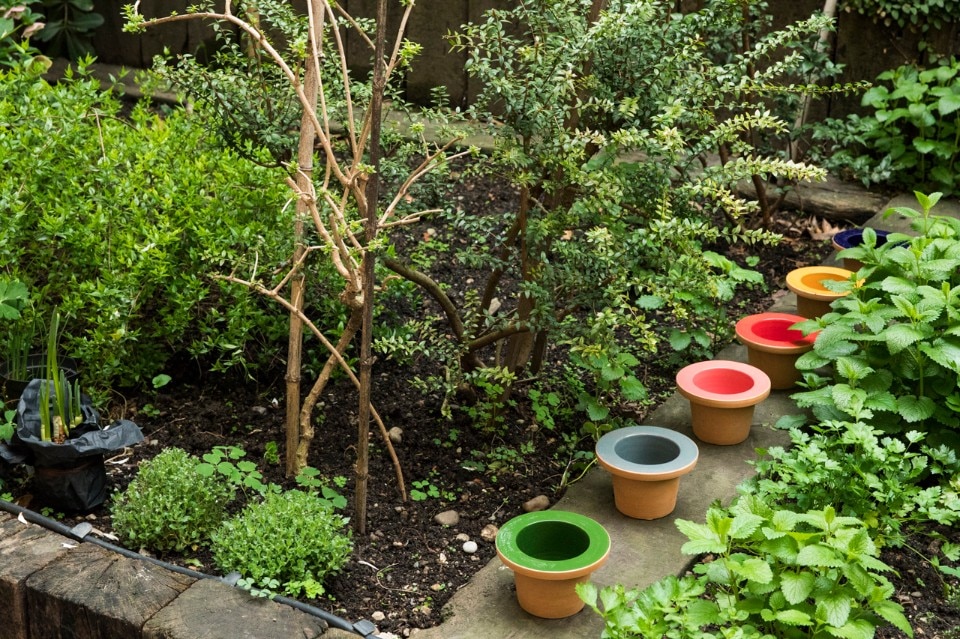
Another important project is with dnd, of which you are their art director…
Handles will always accompany us and will always need to be interpreted. We held a workshop with five architecture studios (Stefano Boeri Architetti, 5+1 AA, Maurizio Varratta Architetto, 967 Architetti Associati and Cino Zucchi Architetti), thinking it would merely be a communications operation, but it proved to be the exact opposite: communications, of course, but also excellent products, almost ready to enter our sales catalogue. For me, it was really satisfying to work with architects who were almost never involved with design. Everyone showed great humility and attention to developing the project with me. I understand that great people are also great because they are willing and have the right attitude.
And then there is “ossi/ossimori” at Luisa Delle Piane. By the way, do you really mean bones?
Yes, they could belong to another civilisation, which disappeared 100,000 years ago. It’s the totally useless gesture – and you know the word usefulness is dear to me – of designing things that have no need to be designed. This game of references between the quality of forms, the beauty of materials (wood), without wanting to simulate reality – they clearly are wooden objects – nurtures the paths of my work. It’s the importance of doing exactly what jumps into your mind. Knowing it’s good for you. It helps me to be better than what I was yesterday.
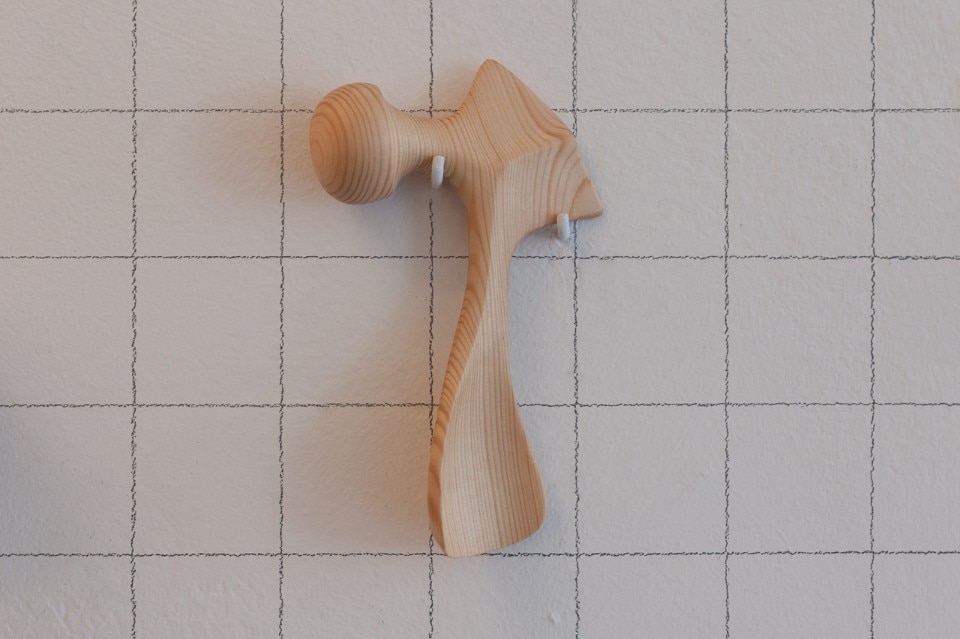
 View gallery
View gallery

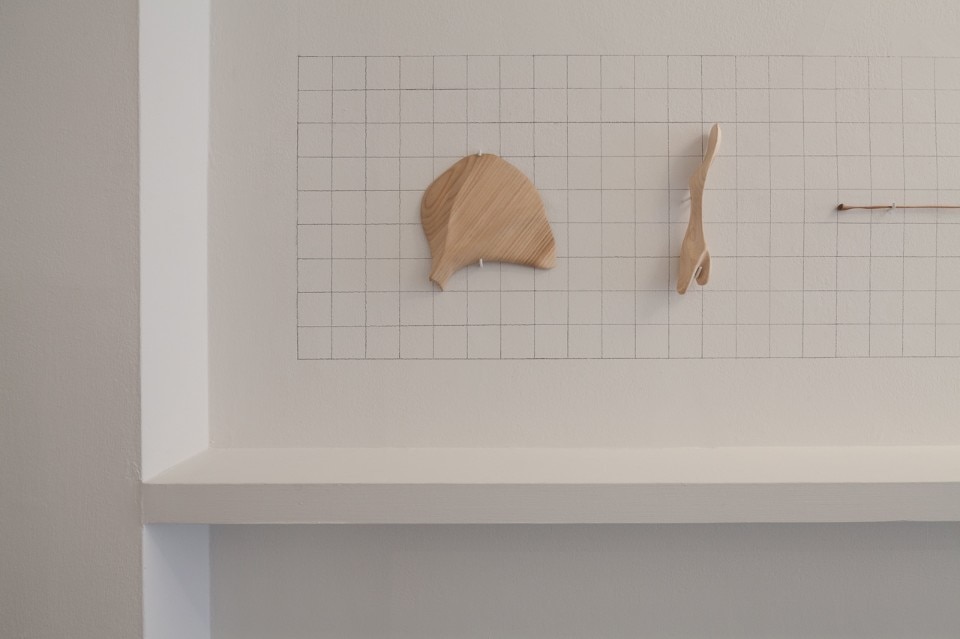
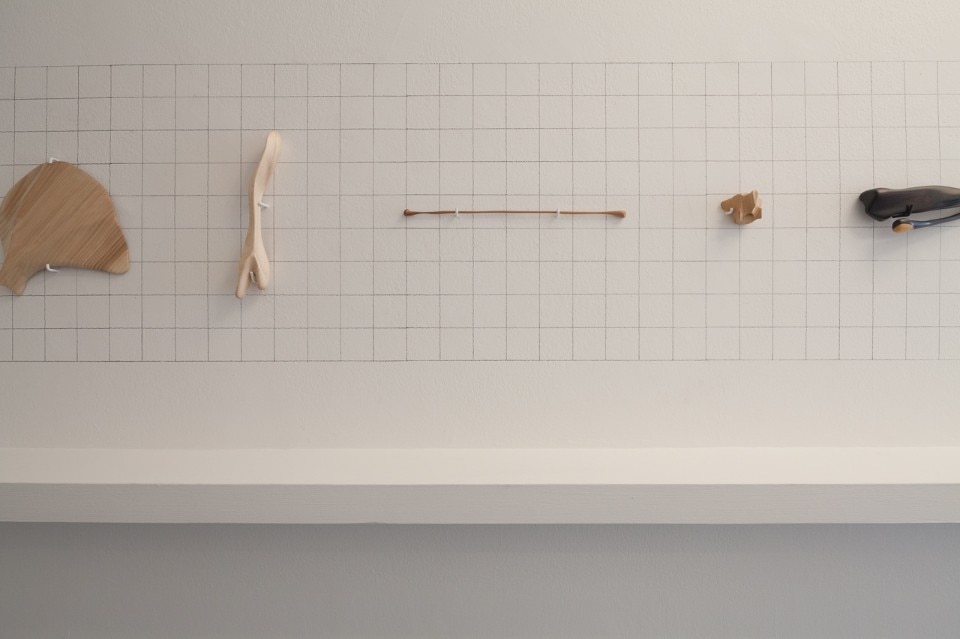
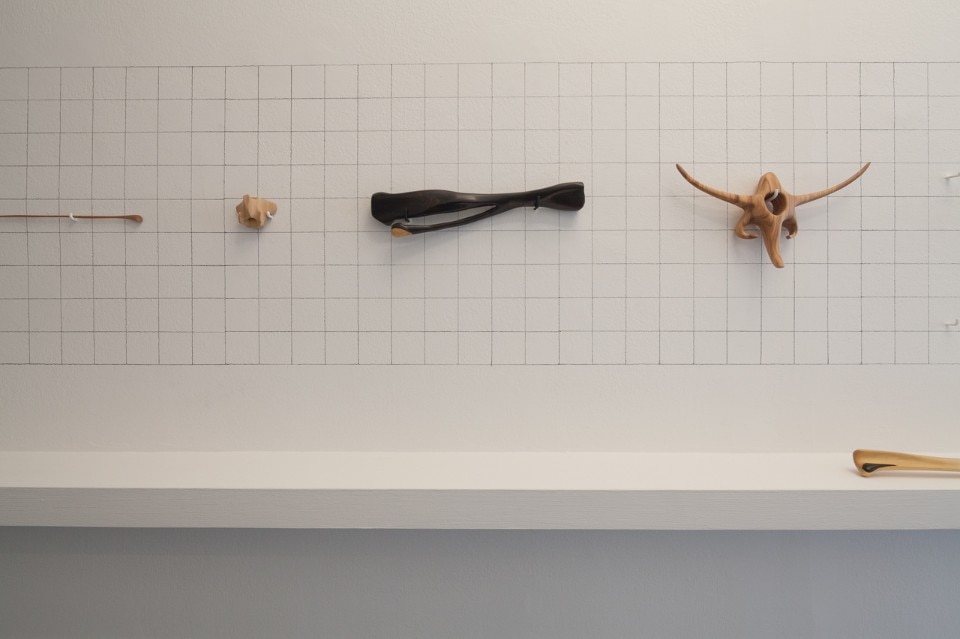
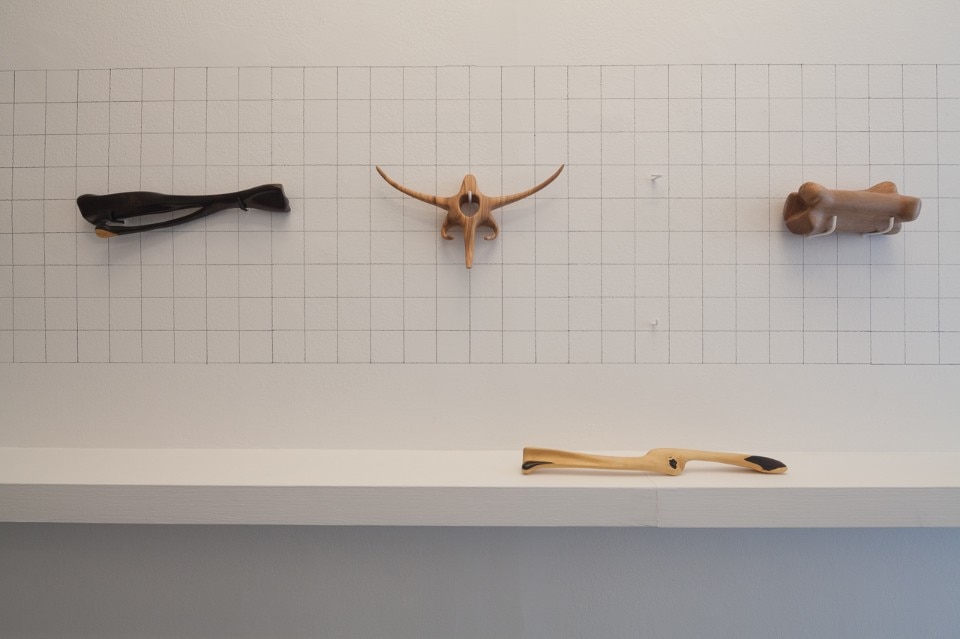
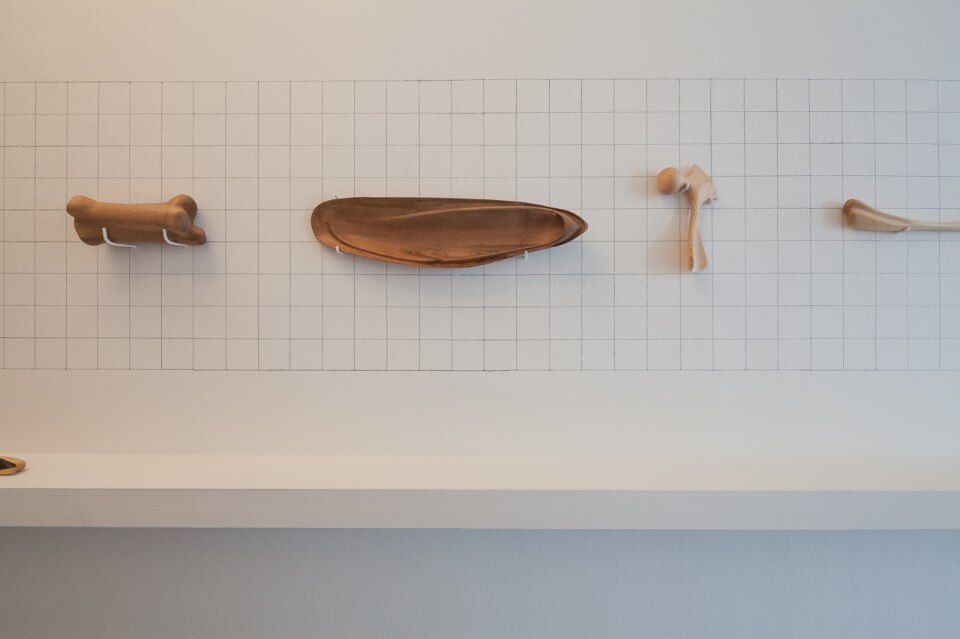
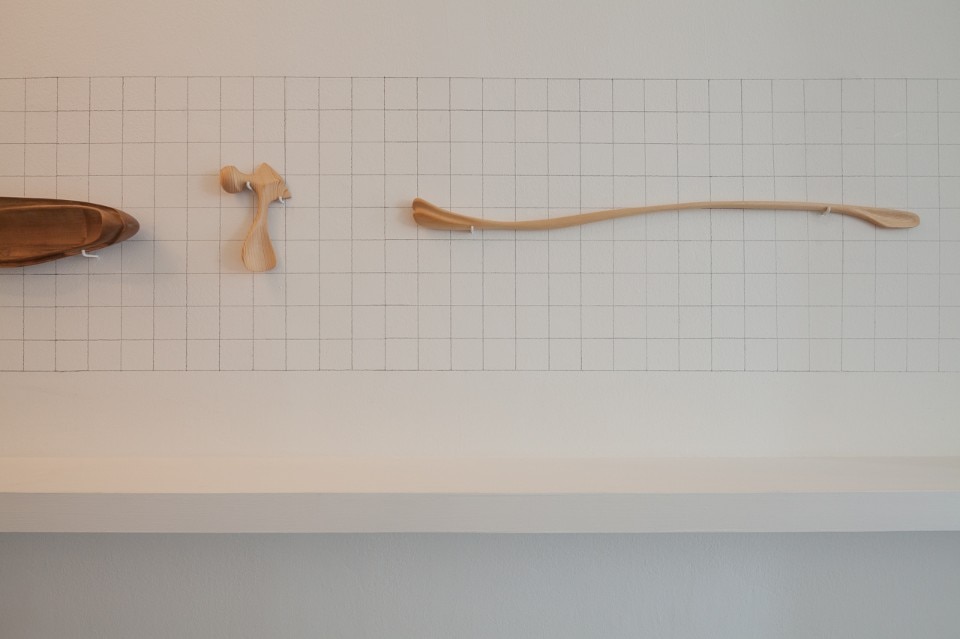
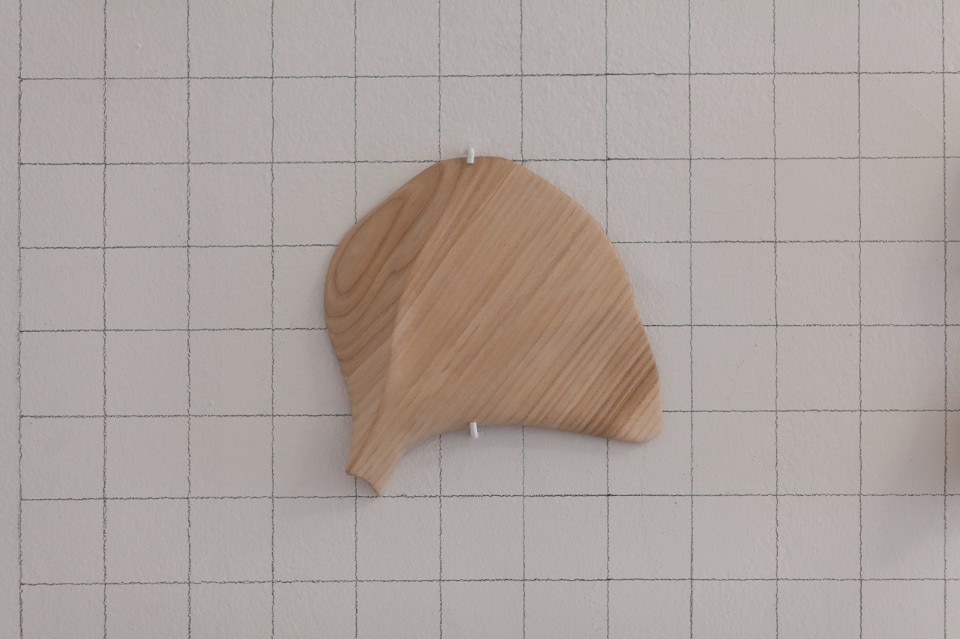
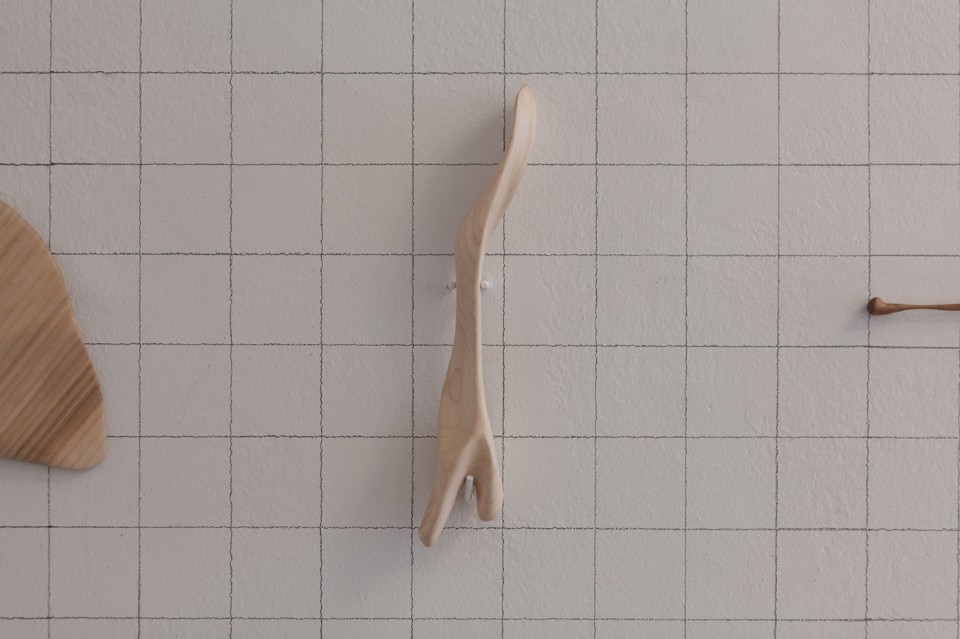
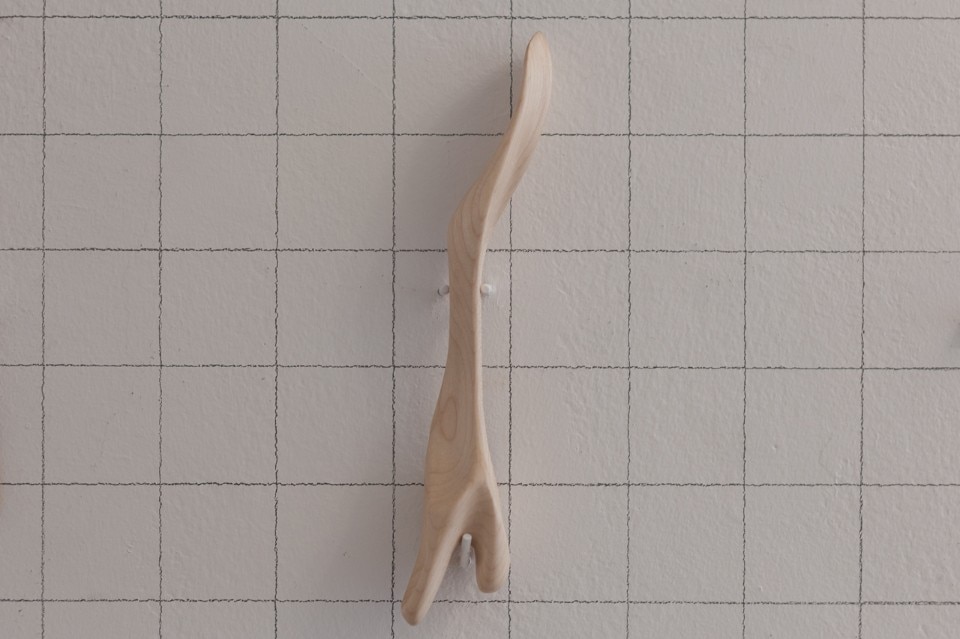
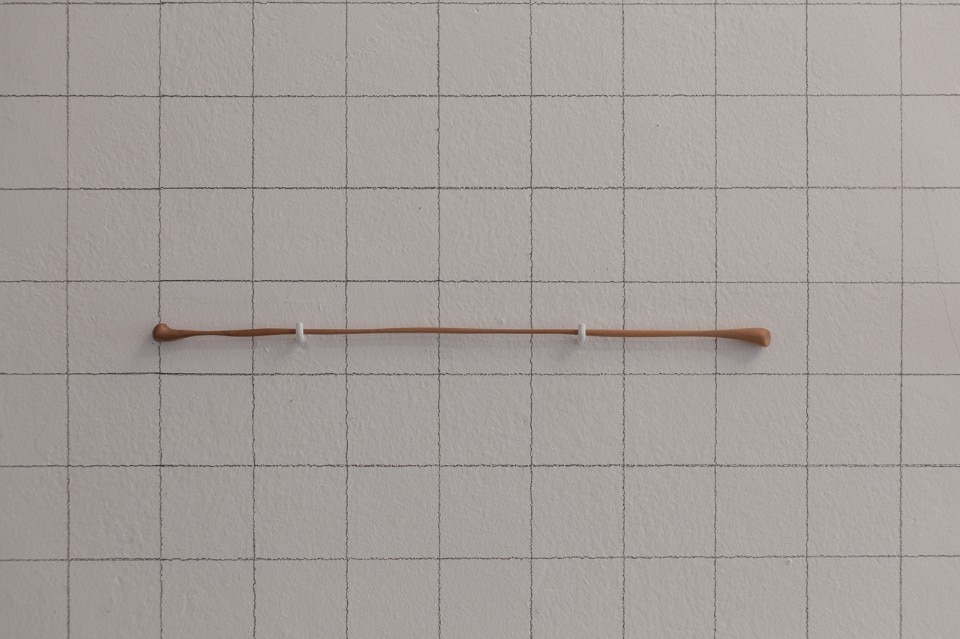
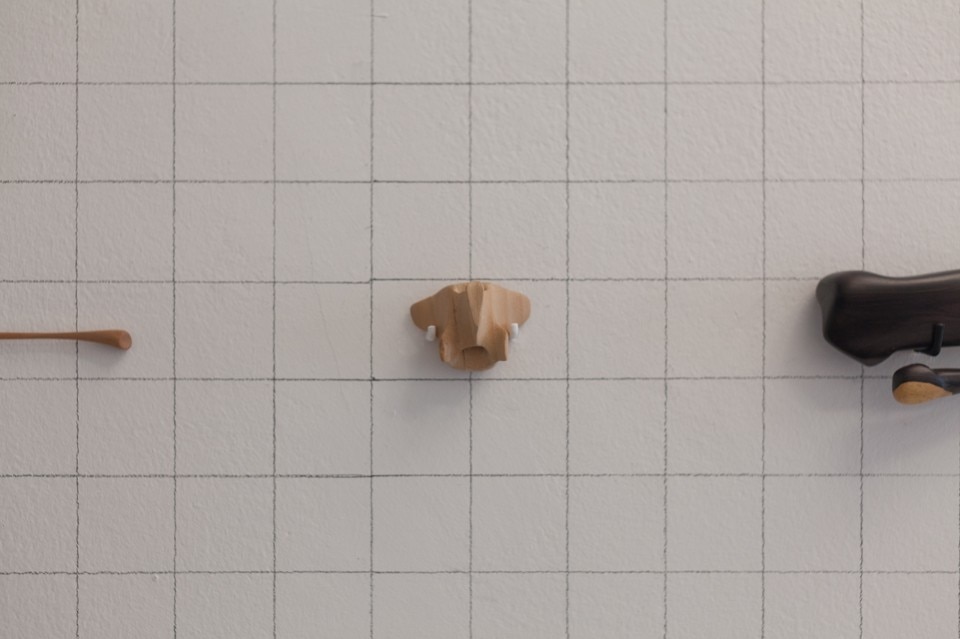
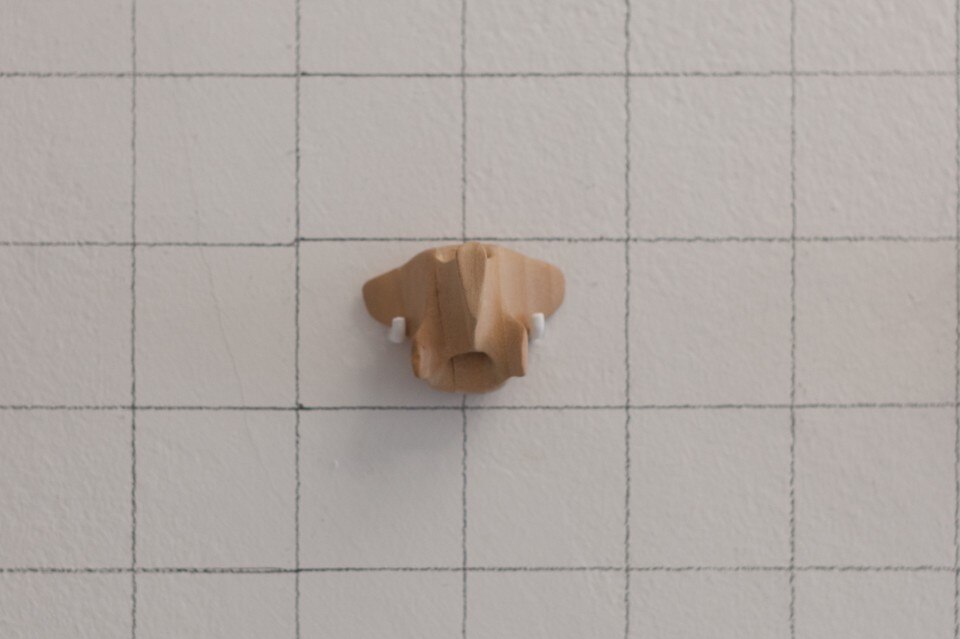
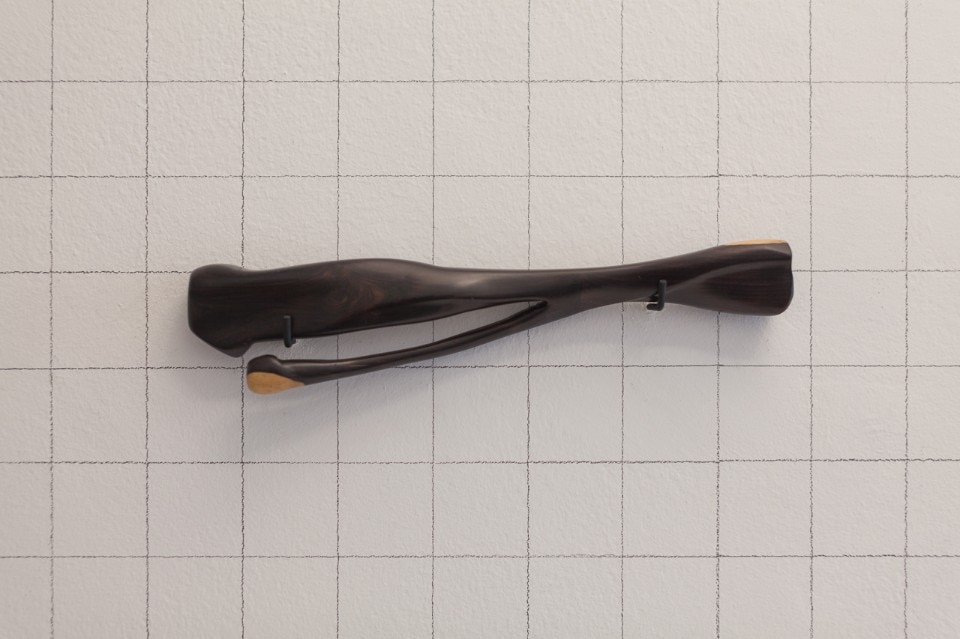
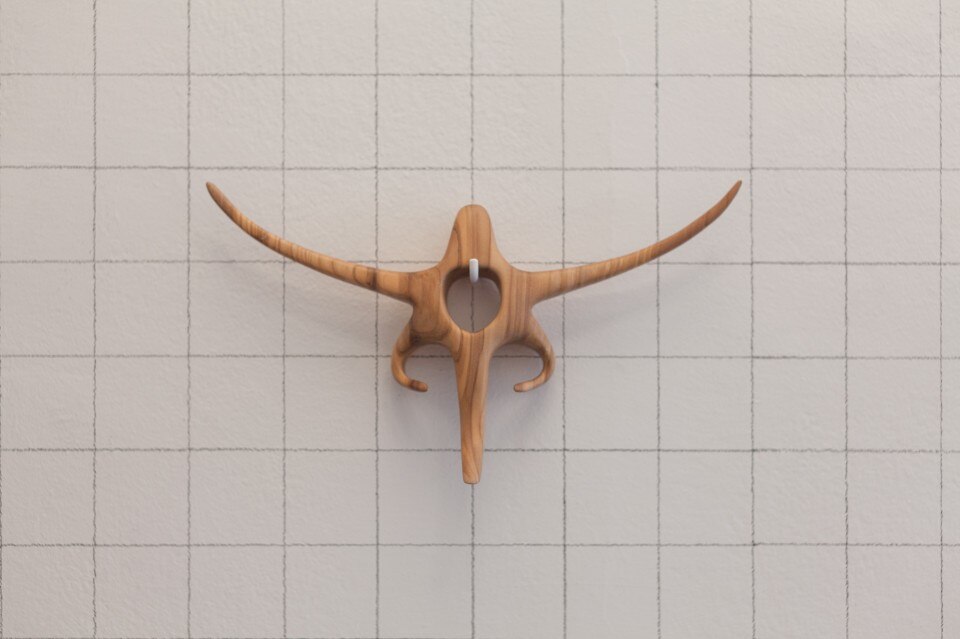
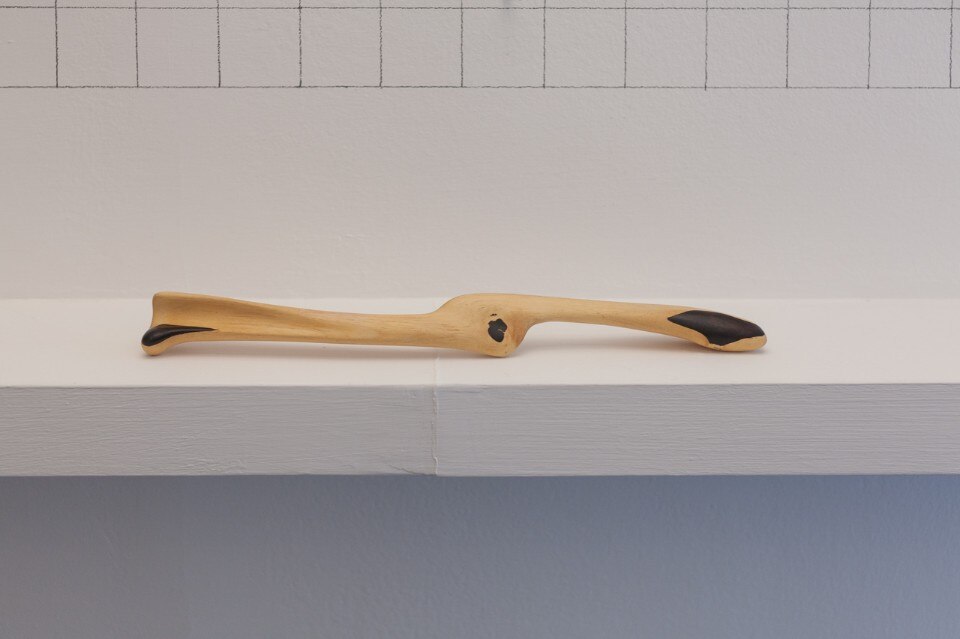
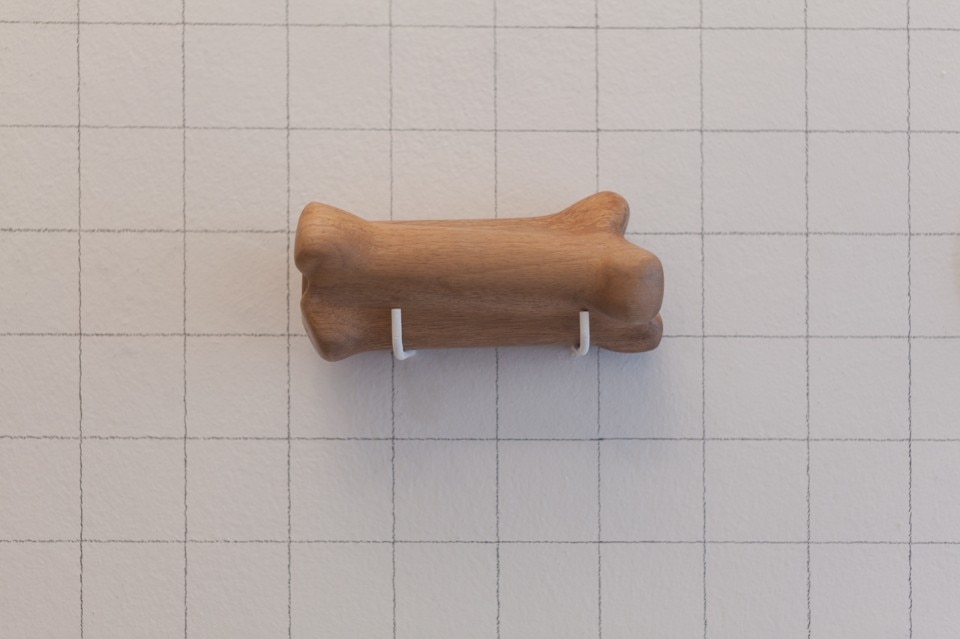
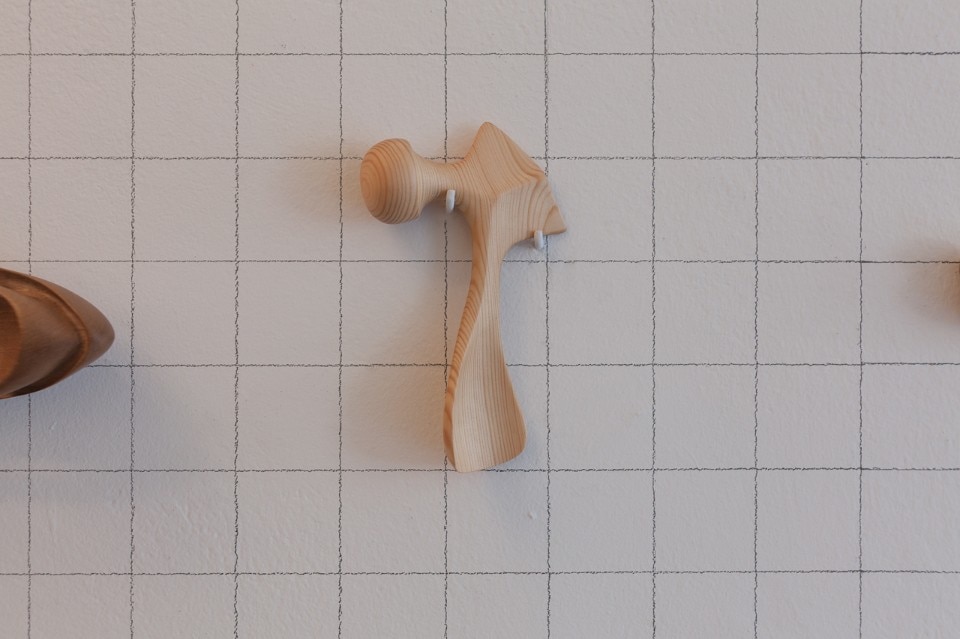
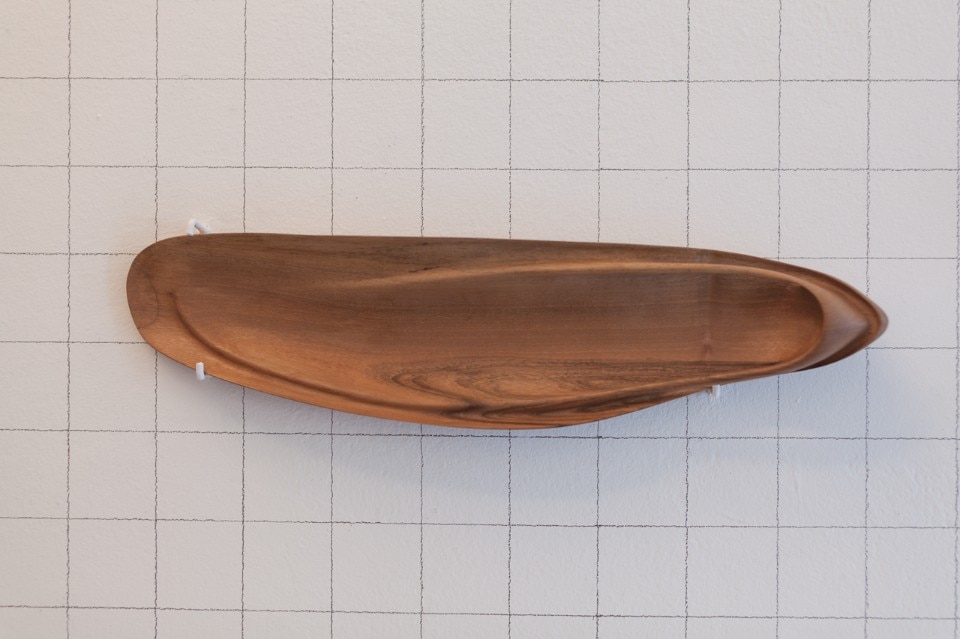
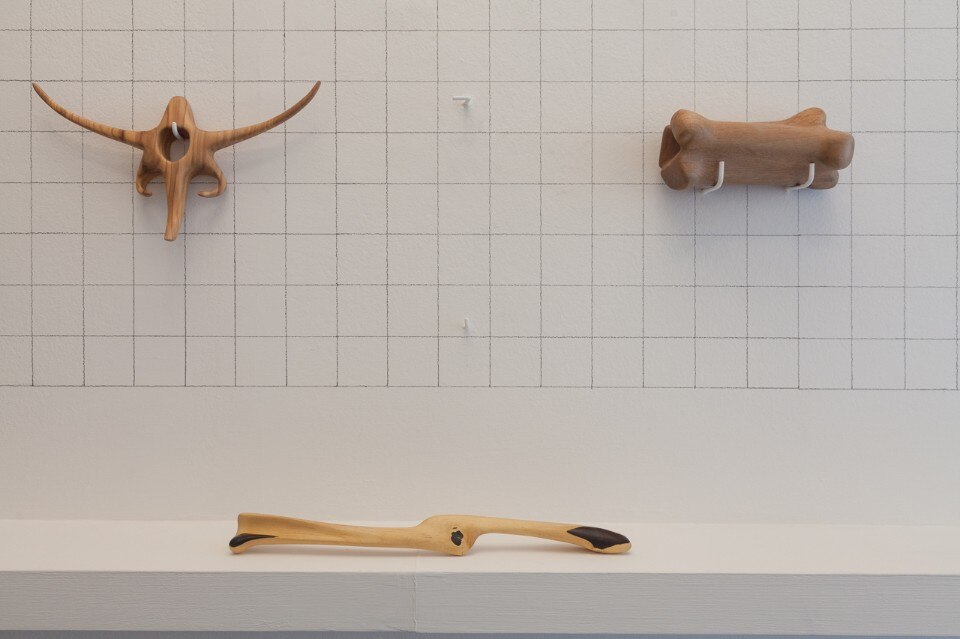




















The list of your projects at the Salone is still long: a pen for Nava, a table for the Triennale, the souvenirs for Coccio, a range hood for Falmec… A noteworthy result for a rather small studio. How many of you are there?
There are two/three people with me steady, plus collaborators on specific projects. The studio’s size is fundamental, because I want to be in control of things and also out of respect for those who work with me and who have to develop my designs and not make them in my place. The small-medium design – I must admit – is what I prefer, because I’m able to control it better. Instead, the Triennale table was something a bit different: it’s a declaration of unbridled love for the place.
Art director, a product and research designer, entrepreneur: you’re quite versatile. In which role do you identify the most?
I decided to call myself a “designer” because all these things fall exactly under the realm of anyone who loves to design things: a company, art directing, an object, an experiment … These are all variations of the same thing. Like Beppe Finessi said: “everything is design”. For me, design is also parking my car or following the instructions on how to assemble something. The difference between a person and a designer is given by the intelligence and quickness with which you act after having thought things out.
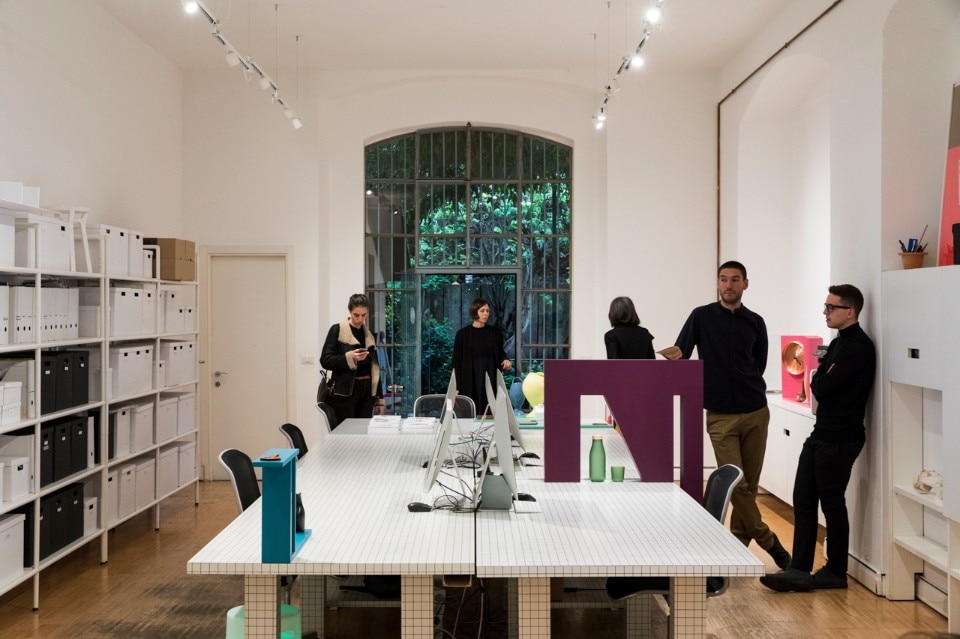
 View gallery
View gallery
Many of your designs come from encounters…
It’s true, and I “provoked” the majority of these encounters. For me, it’s almost like being proud: the majority of works results from my insisting, from my passionate research. I don’t look at the phone waiting for it to ring: it doesn’t ring! For Falmec, my encounter with Luca Poser was assisted by a media agency, but this isn’t normally the case. I hope it happens with Piaggio for my new Vespa design: I published it on designboom and it’s really a hit so far. It has 20,000 likes on social media. That’s never happened to me before.
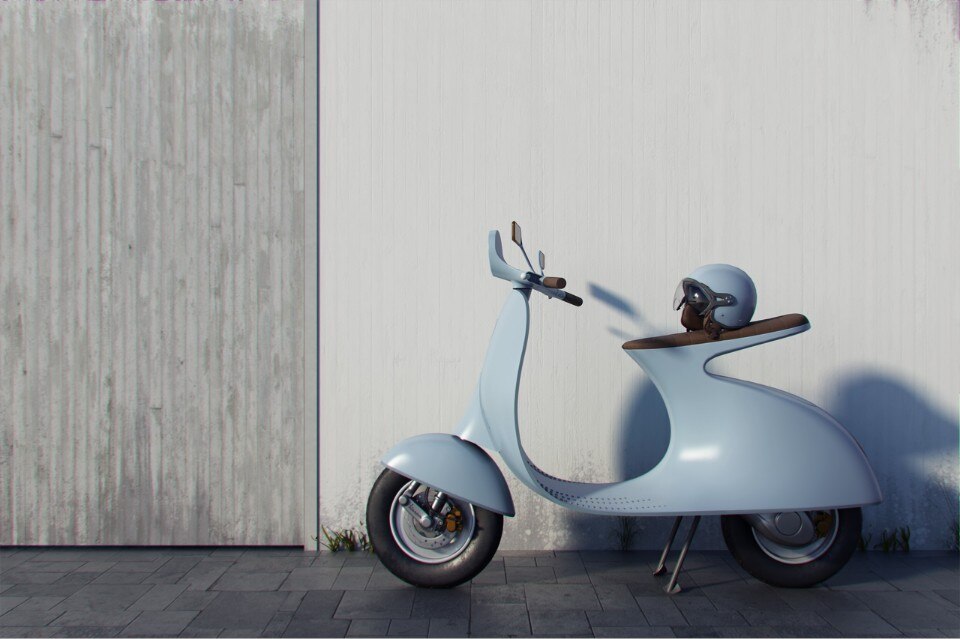
 View gallery
View gallery
Maybe because the Vespa represents you…
We certainly share some things in common: it’s a part of Italy, it’s a smart design. Plus, you can’t not like it. I’ve hit a nerve. I was surprised by the international response: I understand that Vespa is an icon across the world.
So expressing yourself isn’t an act of arrogance, but something necessary.
Communicating is design. The important thing is to guide the communication, not the other way around.
- Titolo mostra:
- Sit down, please! 10 ways to sit with internoitaliano
- Indirizzo:
- viale Tibaldi 10, Milano
- Date di apertura:
- 16 – 21 April 2018
- Titolo mostra:
- Ossi / Ossimori
- Sede:
- Galleria Luisa Delle Piane
- Indirizzo:
- via Giusti 24, Milano
- Date di apertura:
- 16 – 22 April 2018



